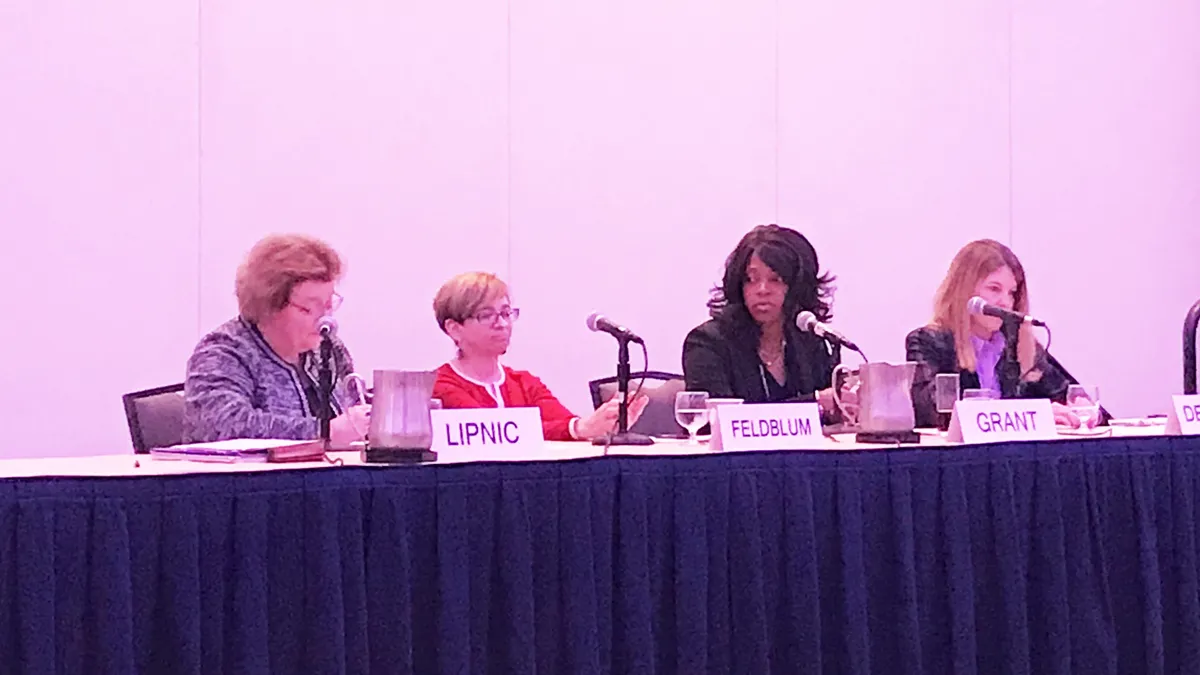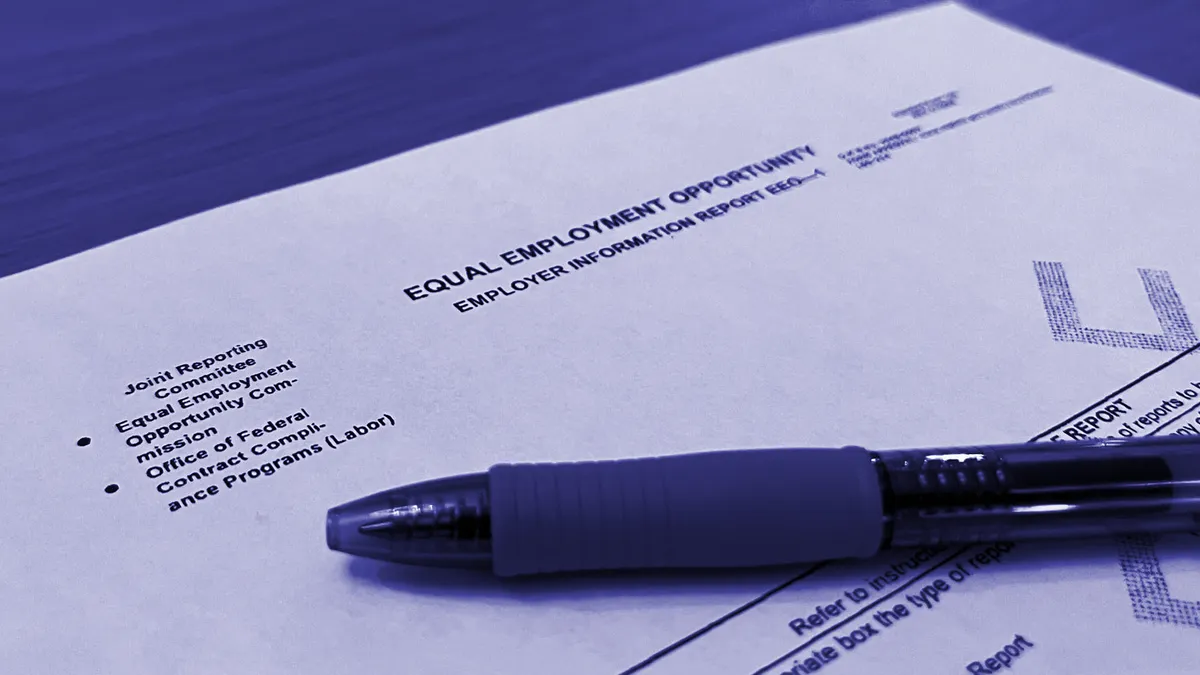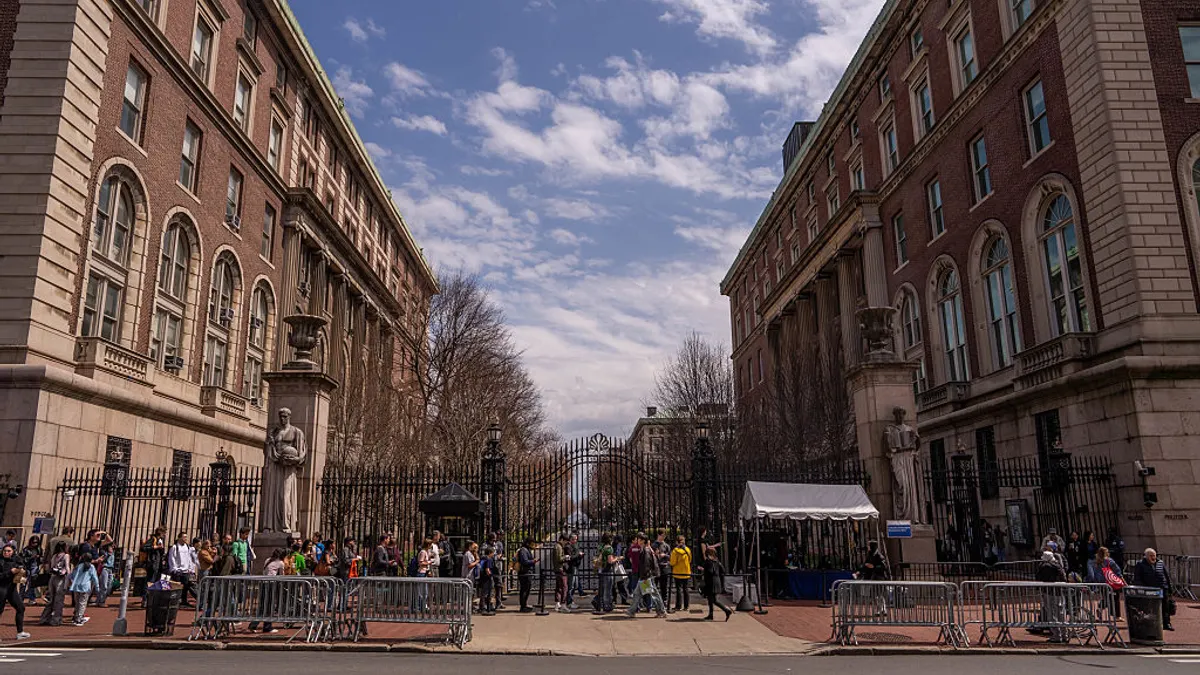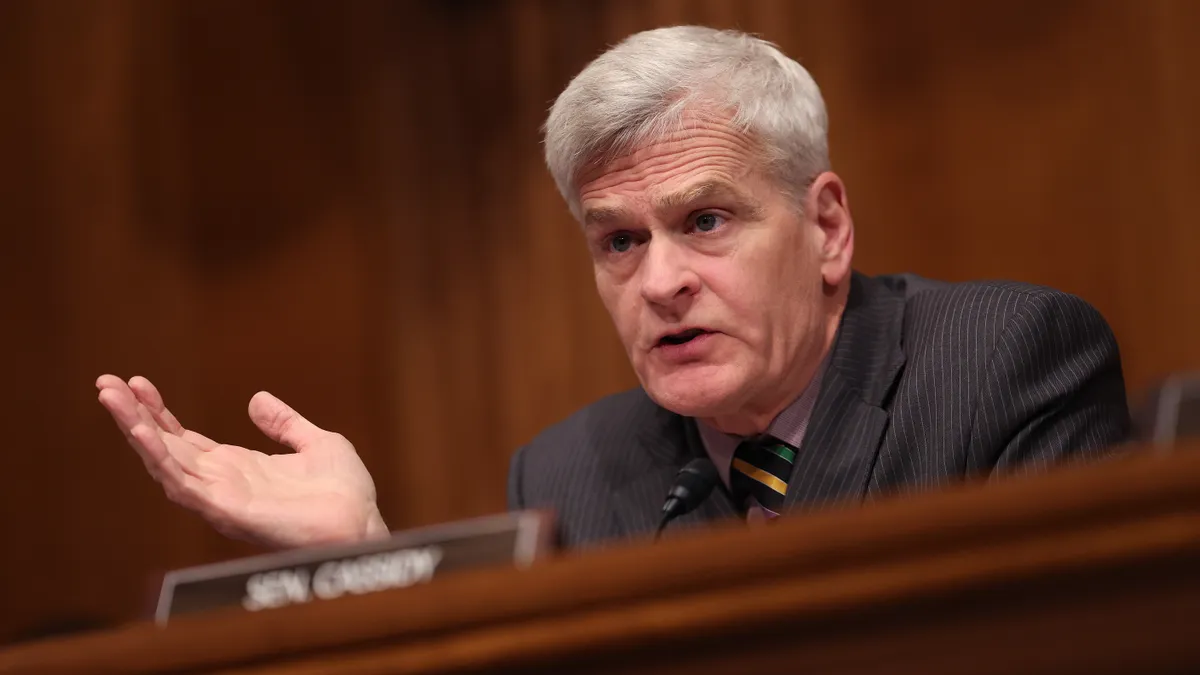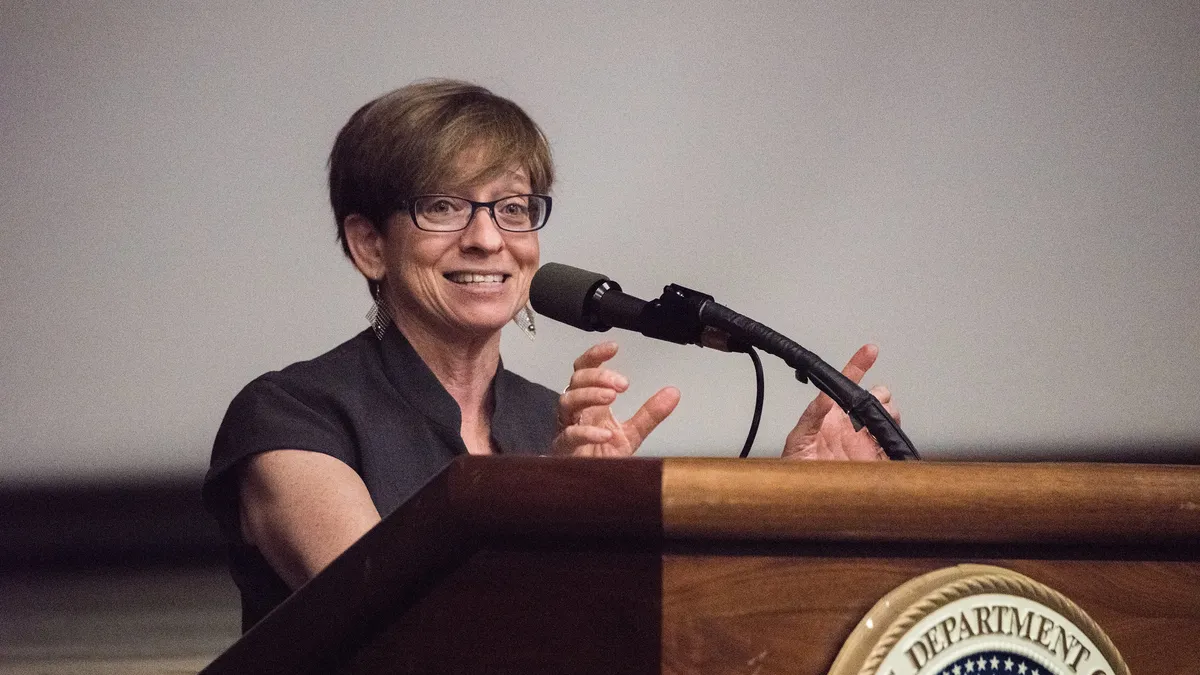Commissioners Victoria Lipnic and Chai Feldblum reflected on a busy 2017 for the U.S. Equal Employment Opportunity Commission (EEOC) Thursday during a panel session at the American Bar Association’s 11th Annual Labor and Employment Law Conference.
The agency has made progress in reducing its case backlog with the current number of cases in EEOC’s system down to around 60,000, said Lipnic, who also serves as Acting Chair of the EEOC. Lipnic added that the agency also saw a decrease in the amount of charges filed over the past fiscal year, garnering 84,000 charges as opposed to the usual 90,000 seen in past years.
At the same time, the agency filed more lawsuits year-over-year in 2017, totaling 184. An additional 104 suits were resolved by the general counsel.
In a wide-ranging discussion, the two also provided a few telling moments of insight on EEOC’s enforcement direction as it prepares to move forward into 2018 with two new appointees (including a new chair).
1. There’s no indication the agency will make any moves regarding EEO-1 pay data reporting.
Under the Obama administration, EEOC added a controversial component to employers' EEO-1 forms that would have required employers to disclose their pay information. Though the proposal was initially green-lit by the White House's Office of Management and Budget (OMB), things changed fast after the inauguration of President Donald Trump. OMB blocked the new requirements — which had a fast-approaching March 31, 2018, deadline — and initiated a broader review of the merits of pay data collection.
Lipnic says that decision "essentially sent [the rule] back to the EEOC," though the rest of the EEO-1 is still due by the March deadline. Feldblum said that despite EEOC nominee Janet Dhillon saying the commission would "commit to reviewing the pay data proposal in a timely fashion" during Dhillon's Senate confirmation hearing, "what comes from that is a complete question."
.@USEEOC Comm. Feldblum: "Ball is now in our court" on pay data reporting rule update. But Lipnic says that doesn't mean commission has to submit one #ABALEL
— Ryan Golden (@RyanTGolden) November 9, 2017
"I completely and strongly believe in enforcement of the Equal Pay Act and pay discrimination [laws]," Lipnic said. "I think that this is just an old policy idea that has been bypassed by technology and other sources of information about pay." She added that states and other groups may have more effective proposals in mind.
Though "the ball is now in our court," as Feldblum phrased it, EEOC doesn't seem to be worried about hitting it back over the net. In the meantime, employers can check out HR Dive's 'lifehacks' for EEO-1 compliance.
2. Lipnic and Feldblum agreed to disagree over a federal court’s ADA leave ruling.
What happens when an employee runs out of federally mandated leave under the Family and Medical Leave Act (FMLA)? The standard answer is that, if they have a disability, the Americans with Disabilities Act (ADA) kicks in. But a recent federal court ruling has signaled that this may not always be the case.
Speaking on that case, Lipnic agreed with the court's decision that the "ADA is an anti-discrimination statute, not a medical leave entitlement.” This drew a lengthy response from Feldblum, who felt the dividing line between short- and long-term leave between was not the "appropriate" one. For Feldblum, the real issue centers on an employee's ability to perform the essential functions of the job.
"[The ADA] might be an inadvertent medical leave law, but you've got to go from the courts," Feldblum said, "and the words assume that you can still be able to do the essential functions if you get the accommodation of leave." Another problem, according to Feldblum: Congress never considered the problem of two laws governing the same area when forming regulations. "The place to go to fix that is Congress," she added.
3. The two spoke briefly about forced arbitration clauses and the arrangements' role in ongoing harassment scandals.
Audience members asked the panel to weigh in on forced arbitration clauses and their impact on employees' ability to speak out about sexual harassment incidents.
"That's a huge issue," Feldblum said. "Personally I understand why Congress passed an act encouraging the use of arbitration in certain areas, but I never thought that that made sense in the employment discrimination area." But, she said, someone who is under an arbitration clause can still bring their charge to the EEOC.
Separately, Feldblum called out the role of training, including bystander engagement training, citing EEOC's 2016 task force report, which was co-chaired by Lipnic and Feldblum.
"I do wonder if, in this moment, employers and organizations will be making a different cost/benefit calculation ... that they are maybe now re-evaluating what they tolerated for years," Lipnic added.



